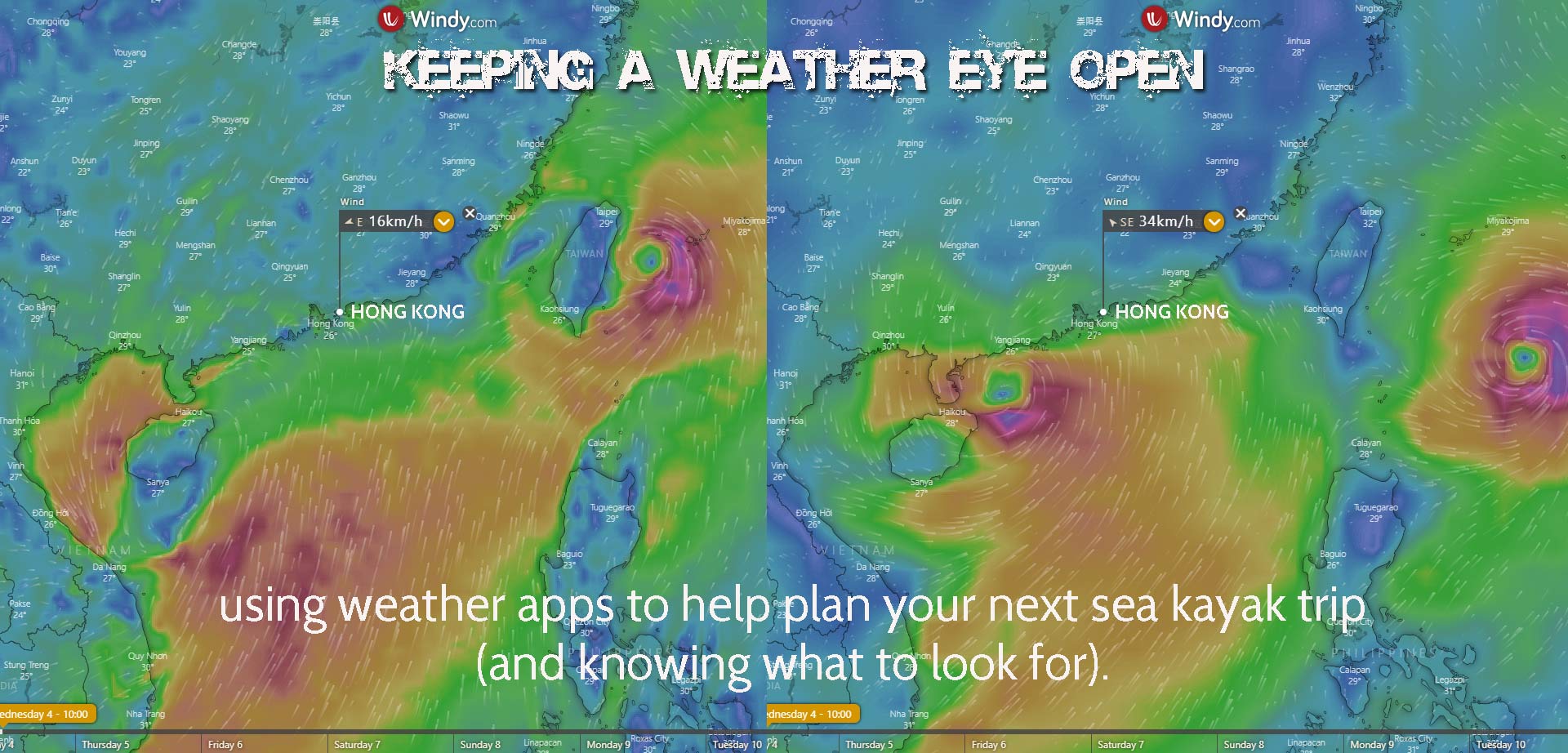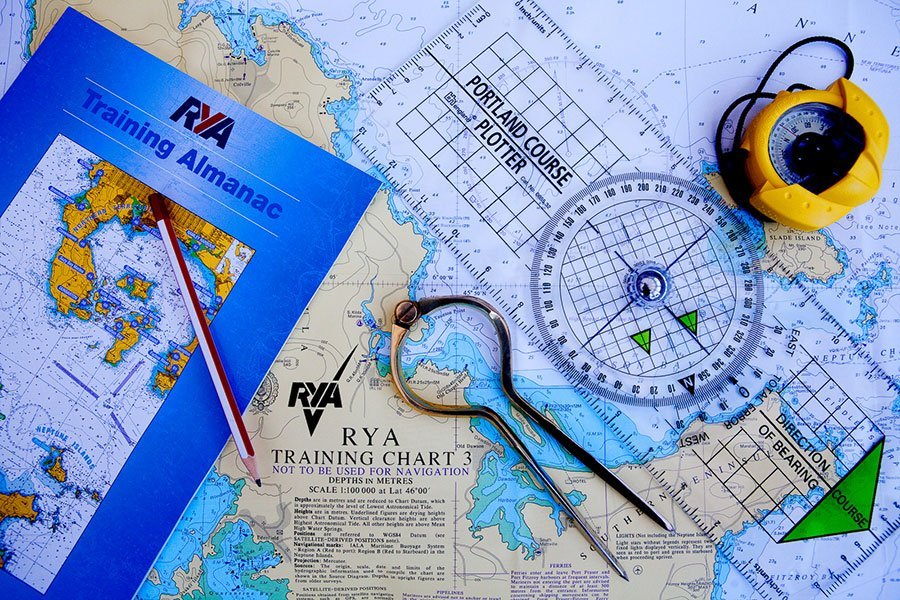The American Heritage Dictionary of the English Language http://www.bartleby.com/61/21/W0072100.html
“weather eye” NOUN: An ability to recognize quickly signs of changes in the weather.
As a sea kayaker, you should work on developing a good “weather eye” (along with all your other seamen’s tricks). Various sights, sounds and smells can tip you off to changes that portend trouble. All you have to do is learn what they are for your kayaking area and keep that weather eye peeled.
What to look for here in Hong Kong.
The weather is the most important criteria for planning when going sea kayaking. The kayaker who paddles without knowing the weather forecast is just asking for trouble.
Winds & the kayaker
When things go wrong for kayakers at sea, it’s usually because of a little too much wind.
Sea kayaks cope very well with waves, tides, currents and extremes of temperature, but too much wind can be a real problem.
If the day of your trip is windy, you can avoid problems by changing your plans. Shorten the trip. Move it to a small estuary with wooded sides, or the downwind side of a headland. On a windy day, paddle upwind to start with so if anybody gets tired, the group will have an easy downwind ride back to where you started from.
If you are out kayaking and a strong wind is blowing right in your face, keep up the pace until you get to shelter.
If you go slowly you will be out there struggling for a lot longer. If you stop for a rest you will drift backwards faster than you expect. A 10-minute rest on open water in a strong wind can cost you an extra 20 or 30 minutes paddling.
Also, wind creates waves. When a strong wind blows out to sea, the water may be smooth inshore but increasingly rough as you get further away from the beach. And the further you go out to sea, the rougher the sea and the stronger the wind. An onshore wind blowing a long distance over water can create a heavy surf which makes things difficult or even dangerous, especially when exiting the ocean. Knowing how to surf you kayak is essential in these conditions!
What is the best weather for kayaking?
A cloudy (overcast) day with little or no wind.
Some people are put off kayaking by cloudy days, but that can be the best time to head out. Kayaking in light rain is also quite refreshing and you’re going to get wet anyway, so don’t let a few showers put you off.
When the weather is overcast you don’t get baked by the sun so you tire less quickly and can have more fun kayaking out on the water. This is very important in Hong Kong
Bright sunny days are the most popular time to hire a kayak becuase most people haven’t had the experience of sitting on or in a kayak with no shade in the hot Hong Kong sun. This is infact not the best time to go kayaking. More information about the dangers of over heating while kayaking will be published in a future article.
So, if you are planning a kayaking trip in Hong Kong, or anywhere for that matter, make sure you get the latest weather information, understand it, apply it to the local geography and have a safe fun day on the ocean making sure you always ‘keep your weather eye open”!









